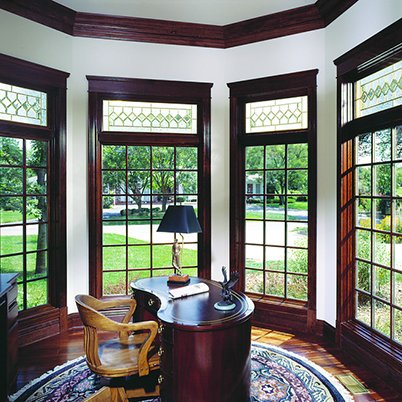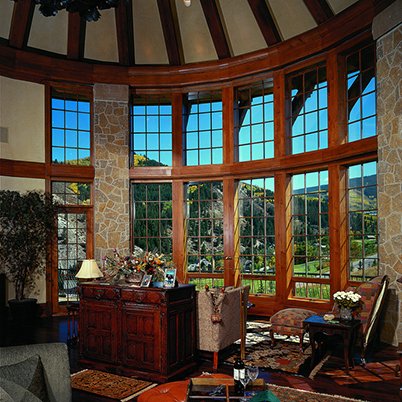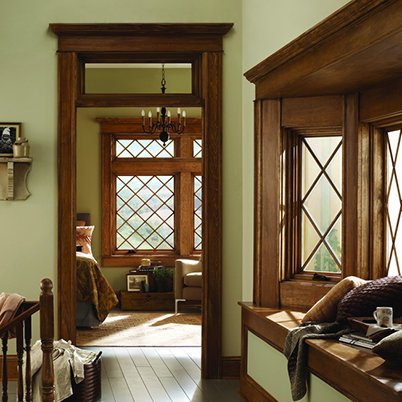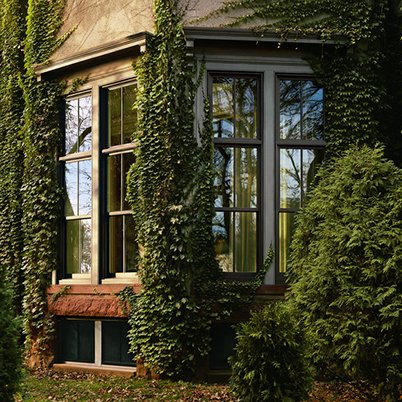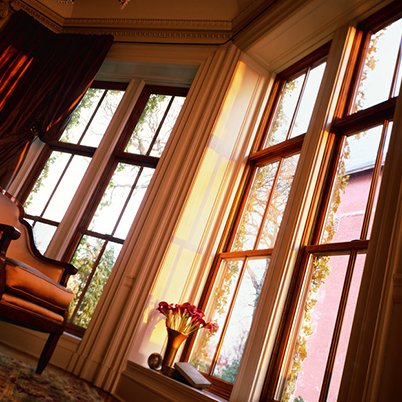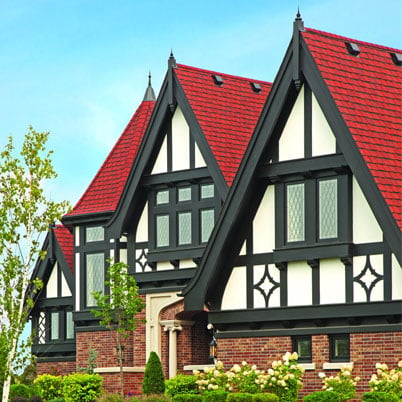
The Tudor home
Tudor style homes are based loosely on early English building traditions and emerged in the United States around 1890. The most distinctive features include exposed timbers interspersed with stucco. Details were often borrowed from Renaissance, Prairie and Craftsman styles.
Essential design elements
Tudor homes feature steeply pitched roofs with single or multiple front gables. Exteriors include decorative half timbering with stucco or brick infill, and combinations of stucco, wood, brick and/or stone. Additional details include asymmetrical door and window compositions with bay windows, recessed entries and large, elaborate chimneys.
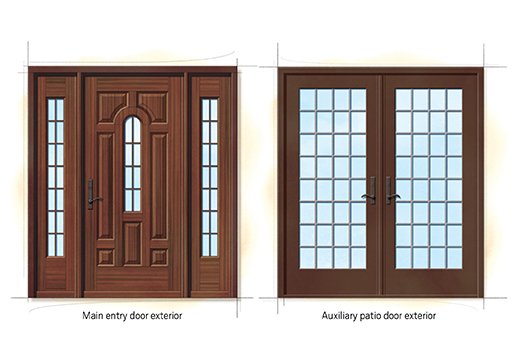
Quintessential doors
For the main entry, a plank with a half-round archtop and a small panel of glass is common. An auxiliary door that had a utilitarian function was often a plank construction type of door. For doors leading to a garden, glass panels were often used.

Quintessential windows
Although the Tudor style uses a number of window types, the most common is a casement window, often with multiple windows mulled together. Transom windows are also typical, as are bay windows projecting from the first or second story.
Style options
More on this home style
Pattern books from the Andersen Style Library present quintessential details of the most popular American architectural styles, with an emphasis on window and door design. The result of years of research, they exist to make it easier to create homes with architectural authenticity.
